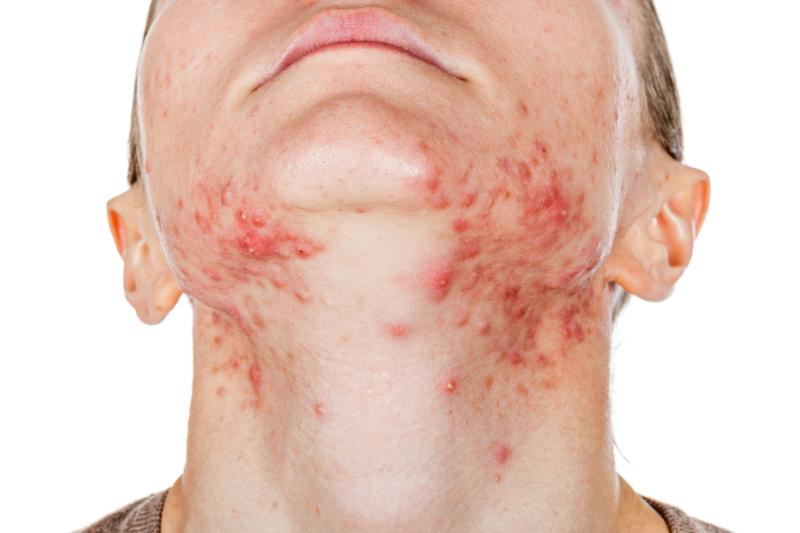
Individuals with persistent acne present with significant hyperandrogenism, polycystic ovary syndrome (PCOS) and hormonal abnormalities—conditions that require an endocrinological evaluation—a study has found.
The study included 120 female acne patients aged ≥25 years who were examined for clinical hyperandrogenism. They also underwent hormonal assessment, which included total testosterone (TT), sex hormone binding globulin (SHBG), free androgen index (FAI), anti‐Mullerian hormone (AMH), 17‐hydroxyprogesterone (17‐OHP), dehydroepiandrosterone sulfate (DHEAS), follicle stimulating hormone (FSH), luteinizing hormone (LH), thyroid stimulating hormone (TSH) and prolactin.
Of the patients, 56.6 percent presented with late-onset acne while 43.33 percent had persistent acne. The majority of the population (71.67 percent) had clinical hyperandrogenism, and biochemical hyperandrogenemia was observed in only 18.33 percent of patients.
Significantly more patients in the persistent vs late-onset acne subgroup had a younger age at onset (mean age, 20.1 vs 29.97 years), a past history of adolescent acne (51.92 percent vs 27.94 percent), truncal predilection (44.23 percent vs 25 percent), PCOS (44.23 percent), irregular menses (40.38 percent vs 14.71 percent) and hirsutism (57.69 percent vs 26.47 percent).
Patients with persistent acne also presented with higher levels of TT (mean, 1.27 vs 0.91 nmol/l), 17‐OHP (mean, 1.76 vs 1.41 ng/ml) and AMH (mean, 5.2 vs 3.31 ng/ml), as well as increased LH/FSH ratio (mean, 1.22 vs 0.77).
Notably, PCOS was observed more frequently among persistent acne patients with clinical hyperandrogenism and elevated 17‐OHP levels.
The findings indicate that patients with persistent acne may benefit from antiandrogen therapy, according to the researchers.